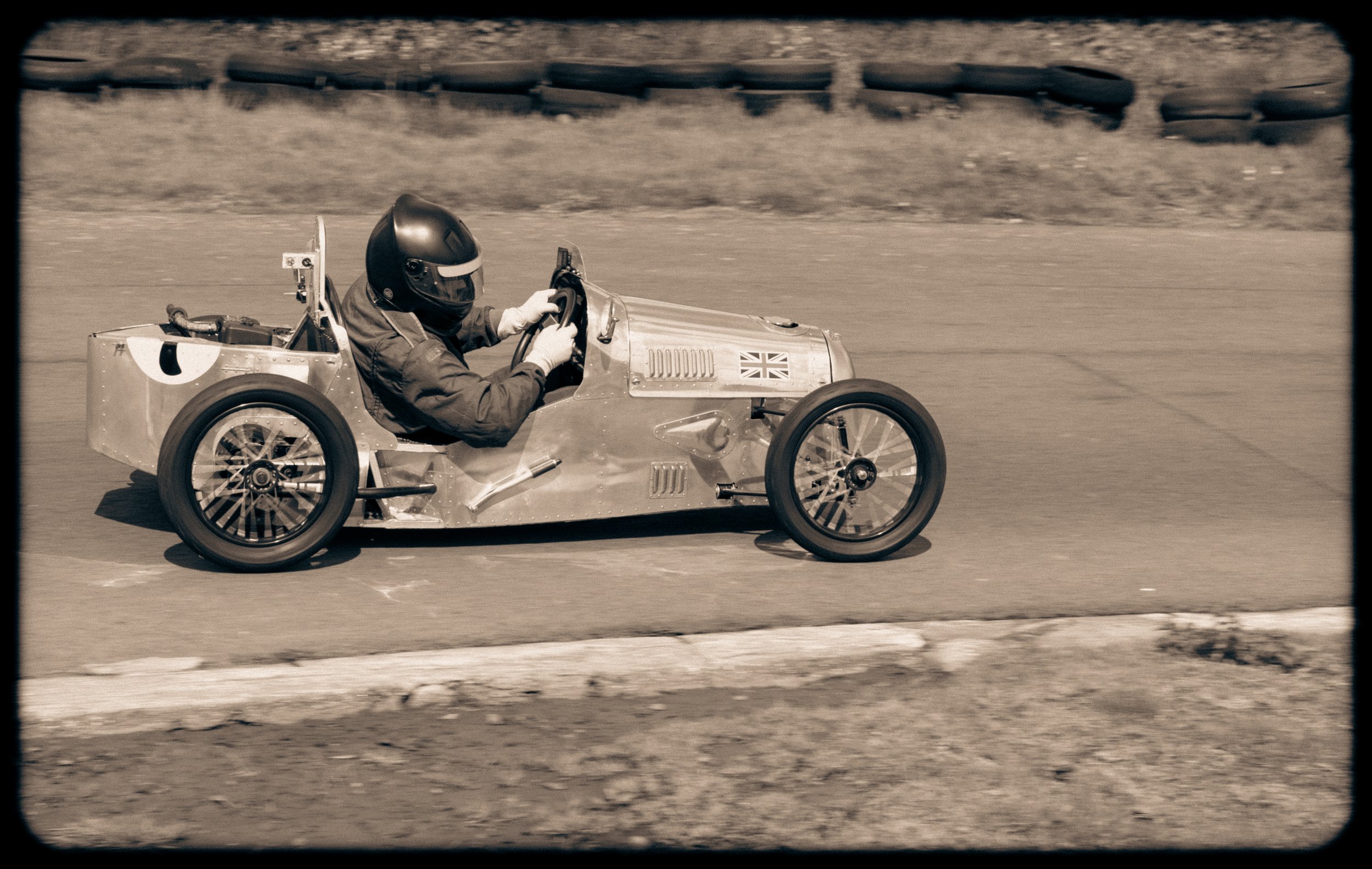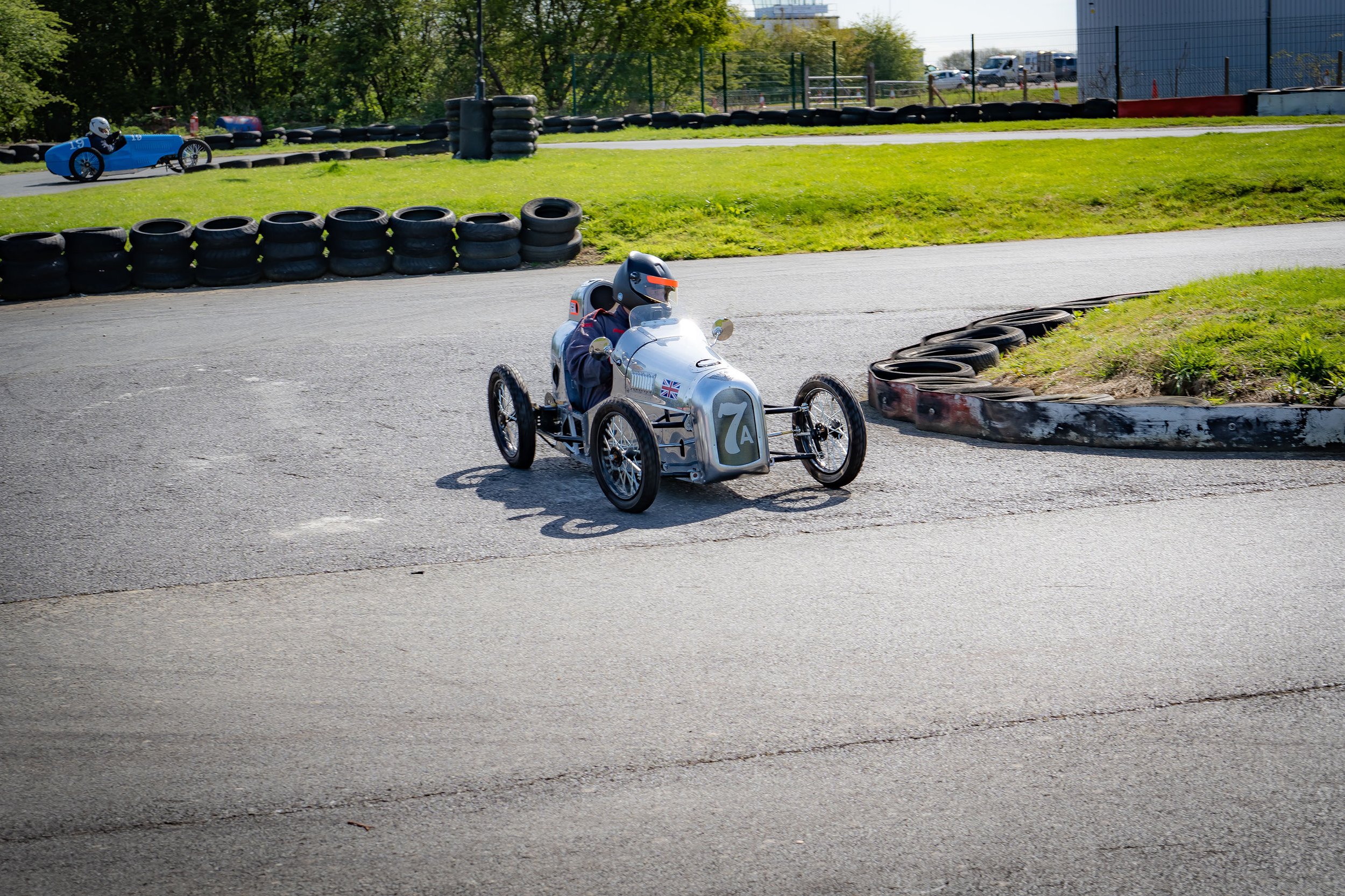
Austin 7 Twin-Cam racing car
The use of left-overs and second-hand parts kept the costs down and reduced to the build time to just three months.
The Inspiration Car
In 1921 the Austin Car Company faced bankruptcy and Sir Herbert Austin believed that the future lay with a small low-cost car to compete with the various low-cost motorcycle and sidecar combinations. He worked on this as a ‘private venture’ at his home with a ‘borrowed’ young Stanley Edge from the design office. Before the little car was even announced to the public, Austin’s works driver (Louis Kings) drove a 696cc prototype Austin 7 up Shelsley Walsh in 89.8 sec, which really impressed the crowds.
Austin 7s and Austin 7 specials were very successful in motorsport throughout the 1920s, both at home and on the Continent. But in 1930, MG (owned by Austin’s main competitor, William Morris), announced a lightweight sports car with a sophisticated 850cc overhead camshaft engine. After being sleeved down to 750cc the MGs quickly outpaced the Austin's and started taking all the glory.
Not to be outdone, Sir Herbert hired talented engineer Murray Jamieson to design a new racing car from the ground up, in fact the only thing common with the original production Austin 7 was the engine capacity – 750 cc. The result was the tiny Austin 7 Twin Cam, which was a masterpiece of precision engineering and in 1936 Austin produced a publicity film of its development called “The Pace that Thrills”. The Austin 7 Twin Cam was powered by a supercharged all alloy engine with gear-driven twin camshafts. Running on Methanol fuel it produced 116 BHP and revved to 12,000 RPM. Subsequently, it dominated its Class and often embarrassed the big boys. Once again Austin was sweeping the board both at home and abroad.
The Back-story and reasoning behind “Jane”
The Austin 7 Twin Cam body shape changed during its racing career between 1935 and 1939. Initially it had an exposed radiator-cap and central fuel-filler (behind the driver’s head). Later revisions included a revised nose covering the radiator-cap and the fuel-filler was offset to make refuelling in endurance races easier. Cooling louvres, exhausts and bodywork bulges also varied over the years. Jane pays homage to the earlier cars.
My back-story is that I have a photo from when I was five, of me in an Austin Racer pedal car whilst on holiday. Also, when I was 17, I had a 1960 Austin 7 “Mini”. In later years I designed and built my own lightweight racing cars, which I raced with the 750 Motor Club. This club originated as a post-war club for racing cars based on the Austin 7 (hence 750 from the cc of the engine). This is where the people behind Lotus, McLaren, Lola, etc learned their trade.
Jane incorporates many leftover parts from my workshop, my old race cars, and past projects including bits of Search & Rescue helicopters I worked on. Also some fuel cell foam from a 1989 Lotus F1, and parts from WW2 Spitfires that I worked on. Consequently, “Jane” is a nostalgic trip back through time for me and brings back many great memories.
The build
As previously mentioned, Jane has been built from lots of leftovers. The chassis is multi-tubular ranging from ½” box to 1½” x ¾” mild-steel box section. This is clad in 20swg aluminium alloy with fibreglass nose and upper tail sections. A cheap second-hand Cadet kart chassis provided most of the required parts and a new Loncin clone GX200 engine was fitted together with a Comet TAV2 belt driven torque converter. The use of left-overs and second-hand parts kept the costs down and reduced to the build time to just three months. Other than some adjustments to the tyre pressures she worked straight-out-of-the-box at the CKGB Whilton event in October 2022, and I have been very pleased with how she runs. A GPS bicycle speedo has now been added plus a tachometer in anticipation of some great times at future events.























